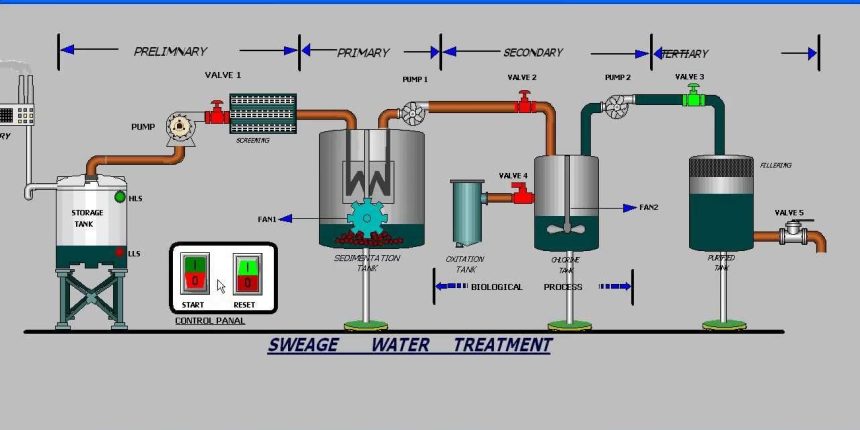Introduction to Water Management Challenges
Effective water management has become increasingly vital due to mounting pressures from escalating population demands, rapid urbanization, and the unpredictable impacts of climate change. These factors have made it challenging for municipalities and utility companies to maintain efficient water supply systems and treatment processes. The quest for innovative solutions is more urgent than ever, driving the adoption of advanced technologies like scada software, known for its robust capabilities in enhancing operational efficiencies through real-time monitoring and control.
Water is a critical resource, and the need for sophisticated and reliable technology to manage its distribution and quality cannot be overstated. Agencies are gravitating towards automation to optimize operational processes and minimize manual intervention. Here, SCADA systems, particularly VTScada, come into play, offering a seamless integration of functionalities that support comprehensive monitoring and management. These technologies protect the availability and integrity of water by giving operators a comprehensive understanding of water operations and empowering them to make well-informed decisions.
Understanding VTScada’s Role
VTScada is an exemplary SCADA platform tailored to address the complexities of water system automation and monitoring. This software facilitates the integration of diverse data sources, guaranteeing that operators receive precise and timely information essential for making critical operational decisions. VTScada distinguishes itself with its high degree of flexibility and a user-friendly interface that allows for extensive customization, catering to the unique requirements of different organizations.
VTScada’s primary strength lies in its ability to streamline complex workflows, ensuring efficient coordination across various water management processes. By interacting with existing infrastructure, VTScada provides a unified solution for managing water treatment, distribution, and wastewater handling tasks. This not only accelerates task execution but also significantly reduces the risk of human error, thereby boosting overall system reliability and performance.
Key Features of VTScada
VTScada is designed with a suite of key features aimed at maximizing operational efficiency and effectiveness. Among these features are real-time data acquisition and comprehensive visualization tools, which allow operators to make swift, data-driven decisions. The software’s advanced alarm management system is particularly noteworthy. It offers prompt alerts for potential anomalies, thus enabling operators to address issues proactively and prevent escalation.
Furthermore, VTScada excels in data logging and historical trend analysis, providing users with the tools to evaluate long-term performance and make strategic improvements. The software’s scalability is another significant advantage, as it can adapt to an organization’s expanding needs by accommodating additional data points and control modules without sacrificing performance. This scalability ensures that VTScada remains a viable solution as an organization grows and its operational needs evolve.
Practical Benefits in Water Management
The implementation of VTScada in water management processes yields numerous practical benefits, most notably through resource optimization and operational efficiency enhancement. One of the primary advantages is the potential for significant cost reduction, achieved by improving resource management and minimizing wastage. Automation of routine tasks allows for better allocation of human resources towards strategic activities, thus enhancing overall productivity.
Additionally, VTScada ensures compliance with environmental and safety regulations by facilitating accurate reporting and record-keeping. The system’s robust data management capabilities simplify access to essential documents, including compliance reports and audit trails, supporting transparency and accountability in water management. By providing a comprehensive and reliable solution, VTScada helps organizations maintain their regulatory commitments while optimizing their operations.
Enhancing User Experience
User experience is a pivotal element of any software solution, and VTScada excels in delivering a platform that is both intuitive and adaptable. The software’s interface is designed with a clear, user-friendly layout that operators of all proficiency levels can navigate comfortably. This design not only facilitates easier system interaction but also encourages faster adaptation and enhanced system utilization.
The adaptability of VTScada allows for the customization of dashboards and control views to suit specific operational needs and preferences, thereby enhancing the overall user experience. By reducing the time required for training and improving user engagement, VTScada enables operators to focus on critical tasks and improve teamwork across departments. This level of usability fosters a more efficient and collaborative working environment.
Real-World Success Stories
Numerous case studies document VTScada’s impact on water management. For instance, a municipality leveraged VTScada to optimize its entire water distribution network, achieving a 20% energy consumption reduction and significant cost savings. Such cases highlight VTScada’s transformative potential in real-world applications, demonstrating improvements in efficiency and sustainability.
Another example covers a utility provider that enhanced its water quality monitoring capabilities with VTScada, ensuring compliance with stringent regulatory standards while maintaining consumer safety. These success stories underscore the value of VTScada in raising operational standards, addressing the complex challenges of modern water management, and paving the way for more resilient and reliable systems.
Future Trends in SCADA Systems
The future of SCADA systems, including platforms like VTScada, is intricately linked to technological innovations, such as artificial intelligence (AI) and machine learning (ML). These technologies promise to significantly enhance water management capabilities by enabling predictive maintenance and optimizing resource allocation based on real-time data analysis and patterns.
The incorporation of Internet of Things (IoT) devices expands the capabilities of SCADA systems by offering more detailed information about the performance and health of water systems. This trend towards increased connectivity and detailed data analytics is set to revolutionize water management practices, ensuring that systems remain robust, flexible, and prepared to meet the industry’s evolving challenges.
Conclusion
In the crucial field of water management, adopting modern technologies like VTScada represents a strategic move towards greater efficiency, sustainability, and reliability. As industries strive to optimize their operations and resources, VTScada offers a comprehensive solution that simplifies complexity while improving system integrity. By integrating cutting-edge features with a focus on user-centric design, VTScada empowers municipalities and utility companies to meet their communities’ water needs effectively now and in the future, laying the groundwork for a more sustainable and secure water management framework.










